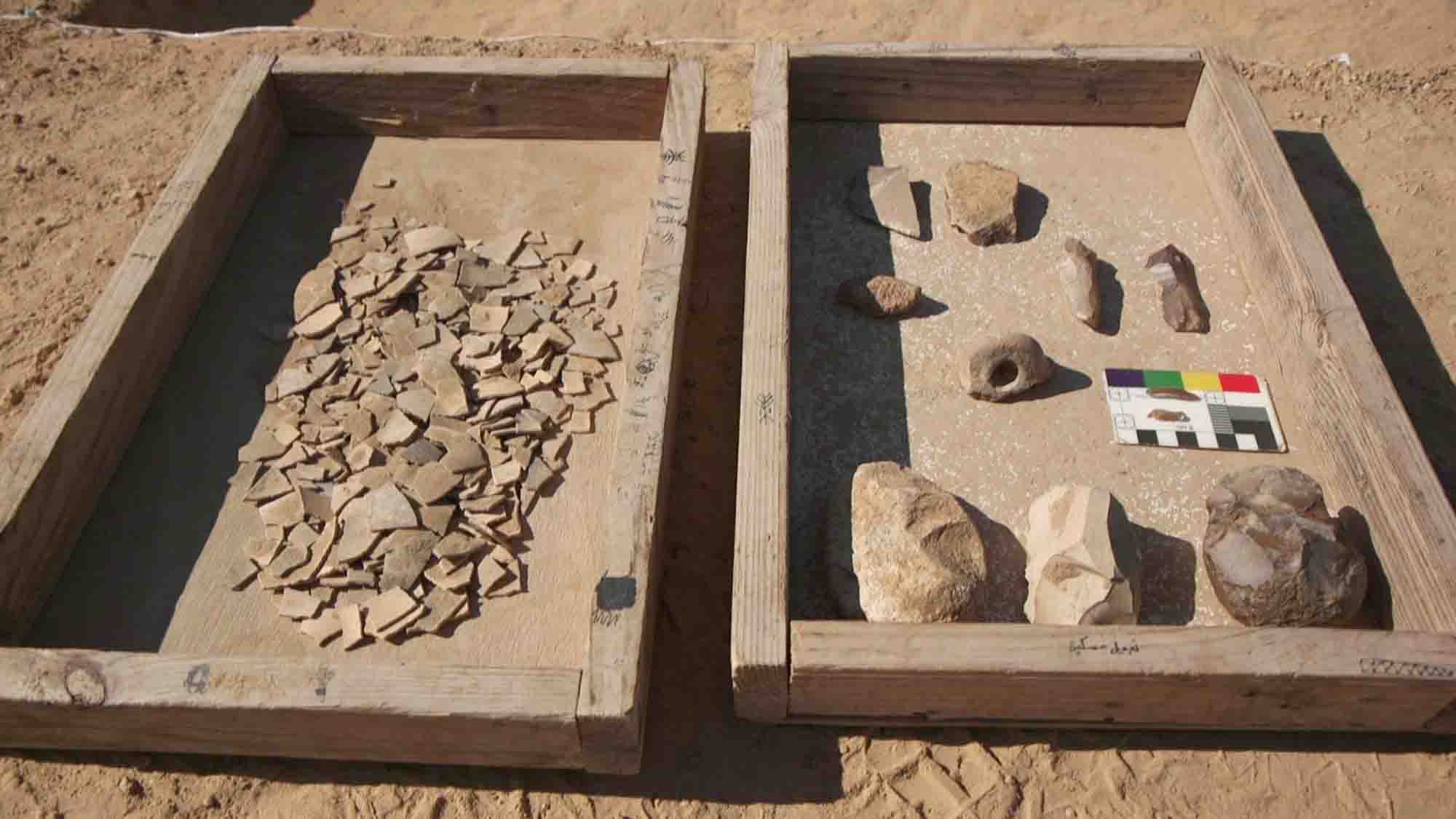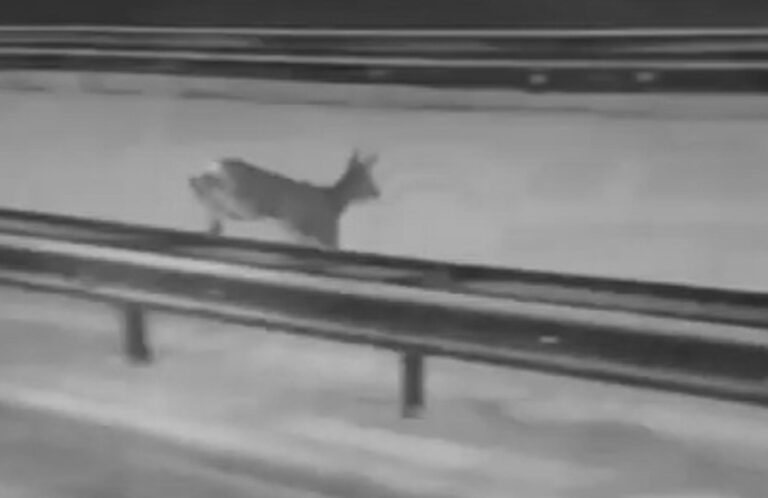Ostrich eggs dating back up to 7,500 years have been found beside a prehistoric barbecue pit where a tribe of hunter-gatherers cooked giant omelettes.
The astonishing desert discovery was made in the Negev, southern Israel, on farmland near Moshav Be’er Milka.
The find – announced by the Israel Antiquities Authority on 12th January – included eight eggs left beside the hearth waiting to be cooked.
One was found actually in the firepit apparently abandoned as it was being prepared.
Footage obtained from the Israeli authorities shows the prehistoric dig site, which has been described as “unique”.
Shells from the eggs were used for decoration, funerary rituals, tools and for cooking, as well as being traded, according to experts working at the site.
Just one ostrich egg was equivalent to about 25 regular chicken eggs and an important source of nutrition.
Experts say the eggs are between 4,000 and 7,500 years old.
Newsflash obtained a statement from the Israel Antiquities Authority saying: “The large eggs were discovered next to an ancient fire pit in an Israel Antiquities Authority excavation, initiated by the JNF and the Ramat Negev Regional Council, undertaken before the development of an agricultural area for Moshav Be’er Milka.”
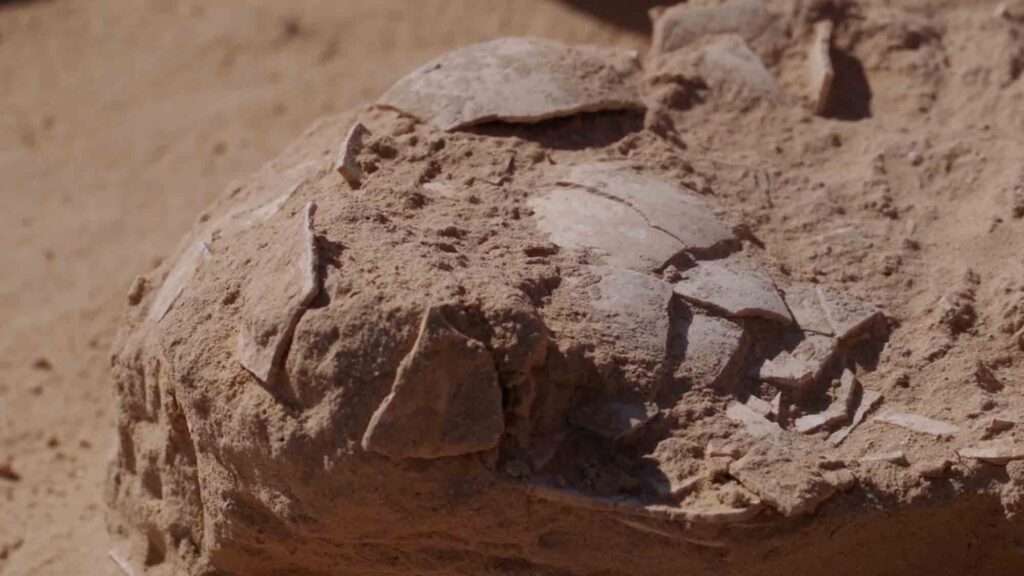
Lauren Davis – the Israel Antiquities Authority excavation director – said: “This is a very important find that — with the help of modern scientific methods — can teach us a lot about the nomadic people of the desert in ancient times.”
She added: “We found a camp site, which extends over about 200 square metres that was used by the desert nomads since prehistoric times.”
She went on: “At the site we found burnt stones, flint and stone tools as well as pottery sherds.
“But the truly special find is this collection of ostrich eggs. Although the nomads did not build permanent structures at this site, the finds allow us to feel their presence in the desert.
“These camp sites were quickly covered over by the dunes and were re-exposed with the sand movement over hundreds and thousands of years.
“This fact explains the exceptional preservation of the eggs, allowing us a glimpse into the lives of the nomads who roamed the desert in ancient times.”
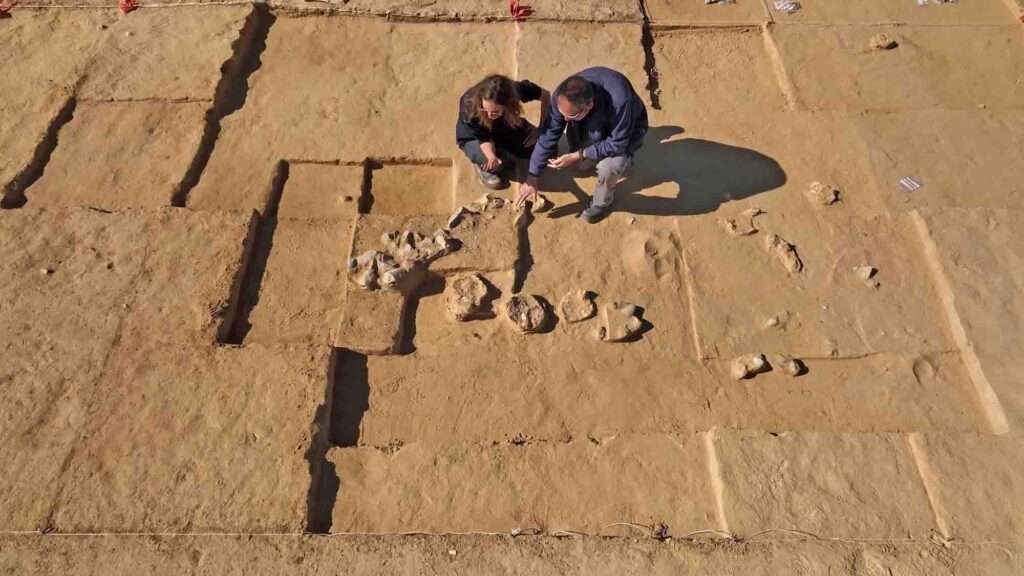
Davis explained: “The proximity of the group of eggs to the fire pit indicates that this is not a natural chance find but the intentional collecting of the eggs.”
She added: “One of the eggs was found directly in the fire pit, strengthening the understanding that they were used as food here.
“The ostrich eggs were crushed but well-preserved, despite the fact that they were uncovered in the surface layer.
“After the excavation, we will reconstruct the eggs, just like a puzzle. The whole egg may tell us the species, and exactly what they were used for.
“As far as I’m concerned, every eggshell is worth its weight in gold! I am really looking forward to the research in the labs. The best is yet ahead!”
Ostriches were common in the area from the early prehistoric periods until they became extinct in the wild in the course of the 19th century.
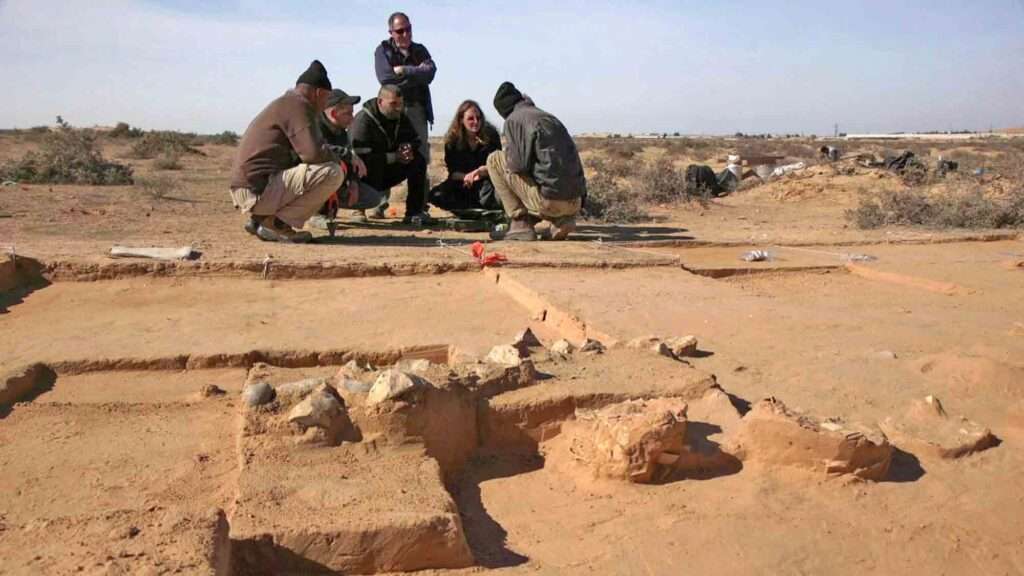
Dr Amir Gorzalczany, of the Israel Antiquities Authority, who has researched the subject, said: “We find ostrich eggs in archaeological sites in funerary contexts, and as luxury items and water-canteens.
“Naturally, they were used as a source of food. One ostrich egg has the nutritional value of about 25 normal chicken eggs.”
He added: “There is sometimes even evidence of decorating and incising on ostrich eggs, showing their use as decorative items.
“It is interesting, that whilst ostrich eggs are not uncommon in excavations, the bones of the large bird are not found.
“This may indicate that in the ancient world, people avoided tackling the ostrich and were content with collecting their eggs.”
Eli Escuzido, Director of the Israel Antiquities Authority, said: “The collection of ostrich eggs from Be’er Milka is a rare and fascinating find.

“It seems that the eggs survived as they were covered over by the sand dunes for so long, and due to the relatively dry climate of the area.
“The finds will go directly from the excavation to the new analytical laboratory in the Jay and Jeanie Schottenstein National Campus for the Archaeology of Israel, where they will undergo further observation and research.”
To find out more about the author, editor or agency that supplied this story – please click below.
Story By: Joseph Golder, Sub-Editor: Marija Stojkoska, Agency: Newsflash
The Ananova page is created by and dedicated to professional, independent freelance journalists. It is a place for us to showcase our work. When our news is sold to our media partners, we will include the link here.

